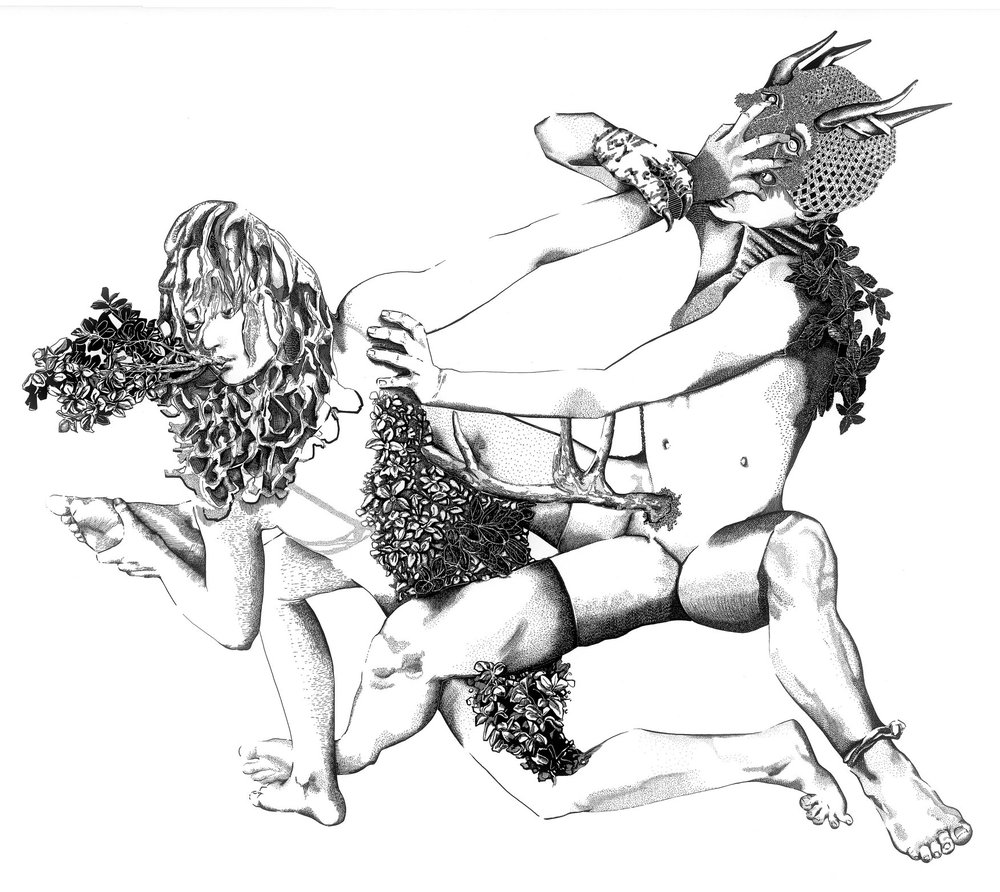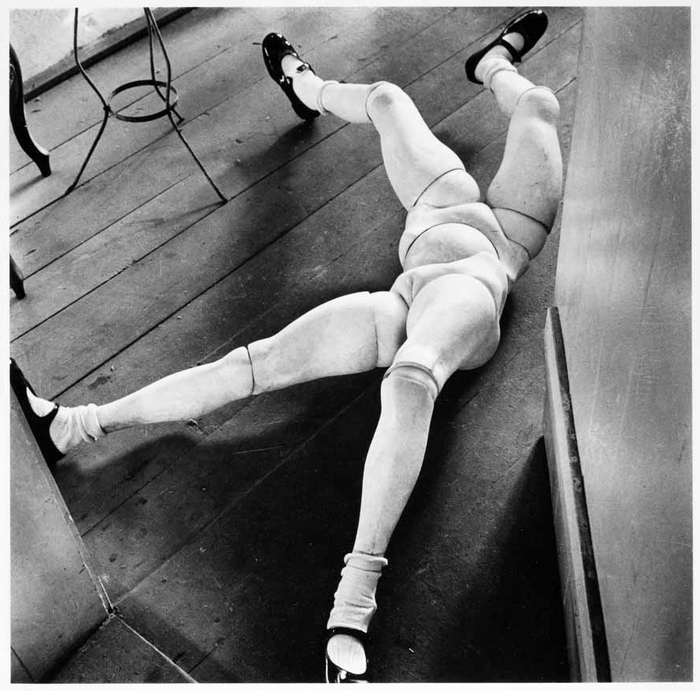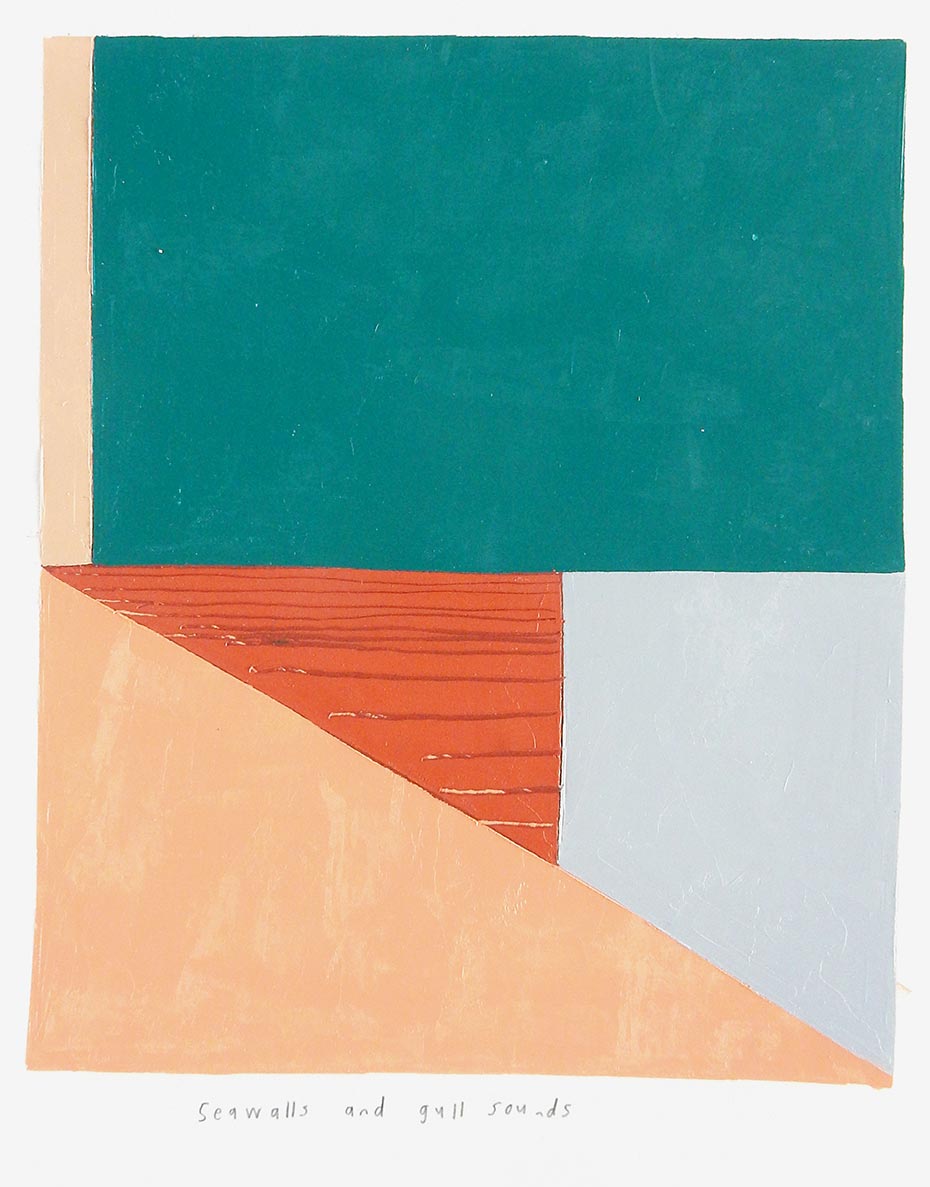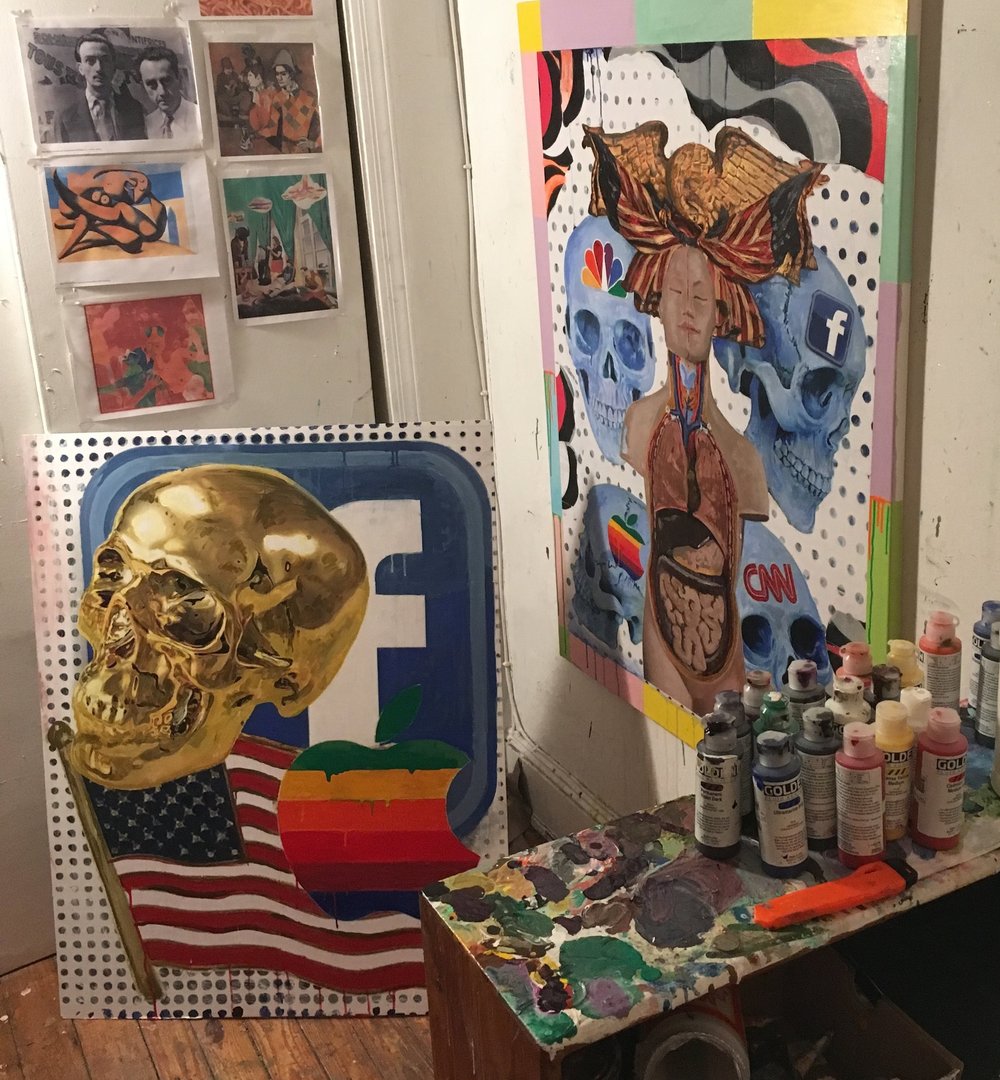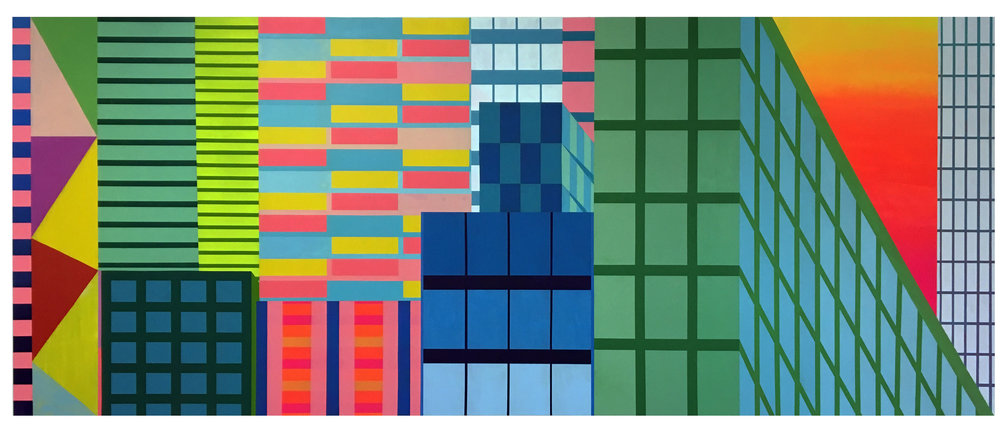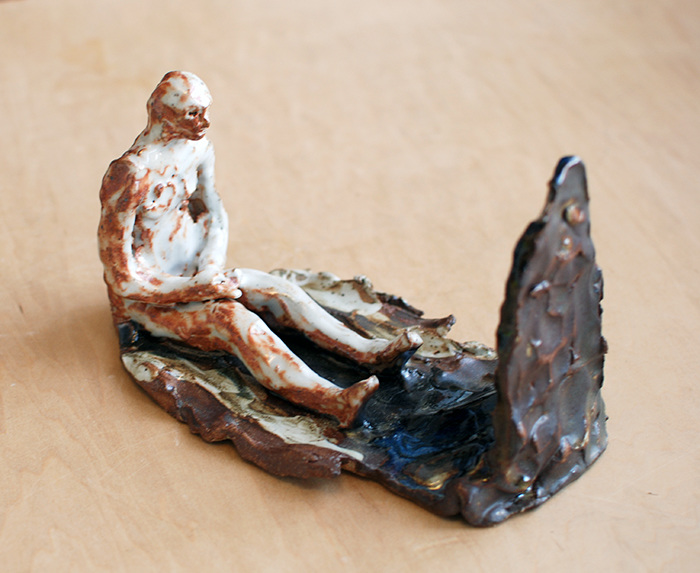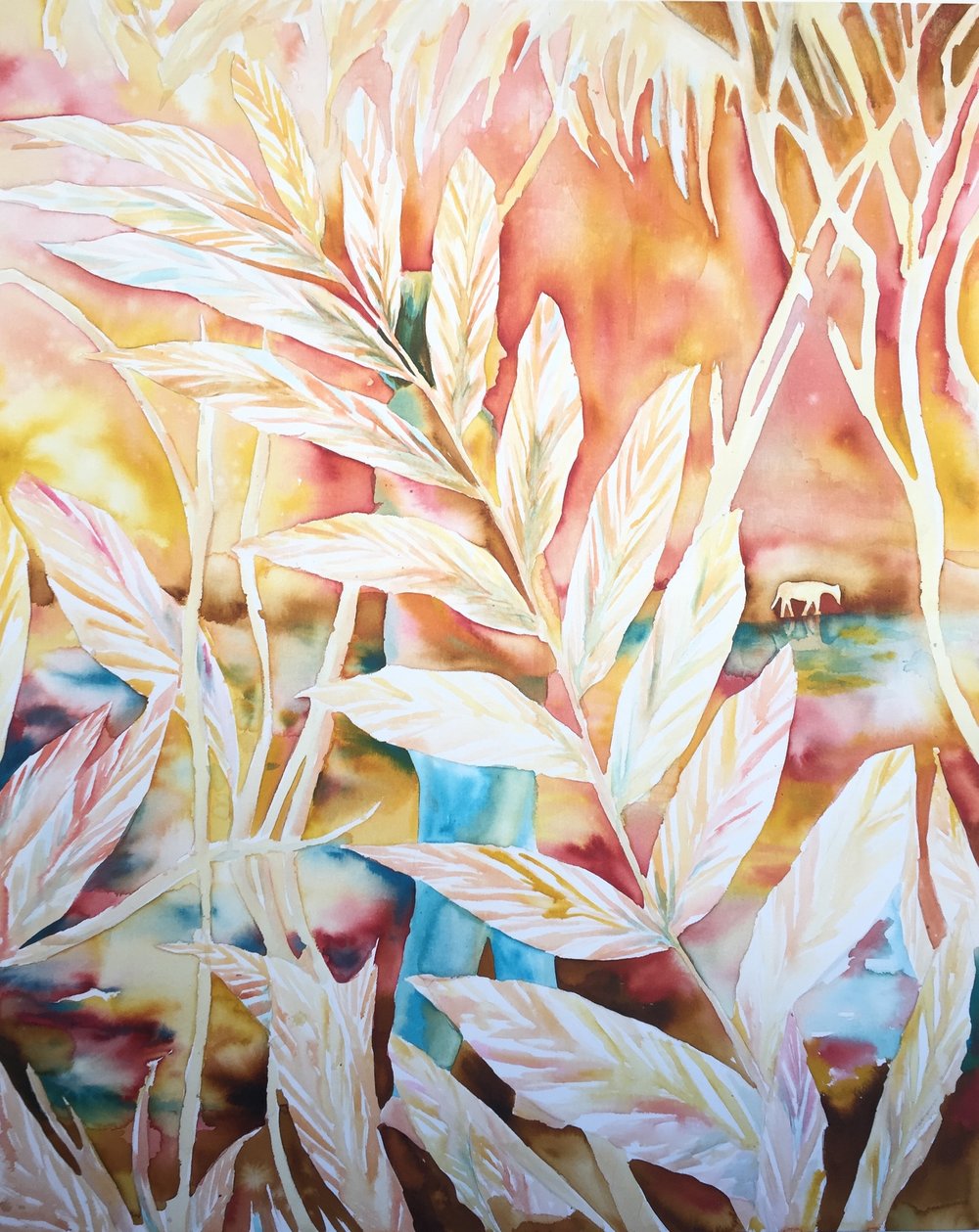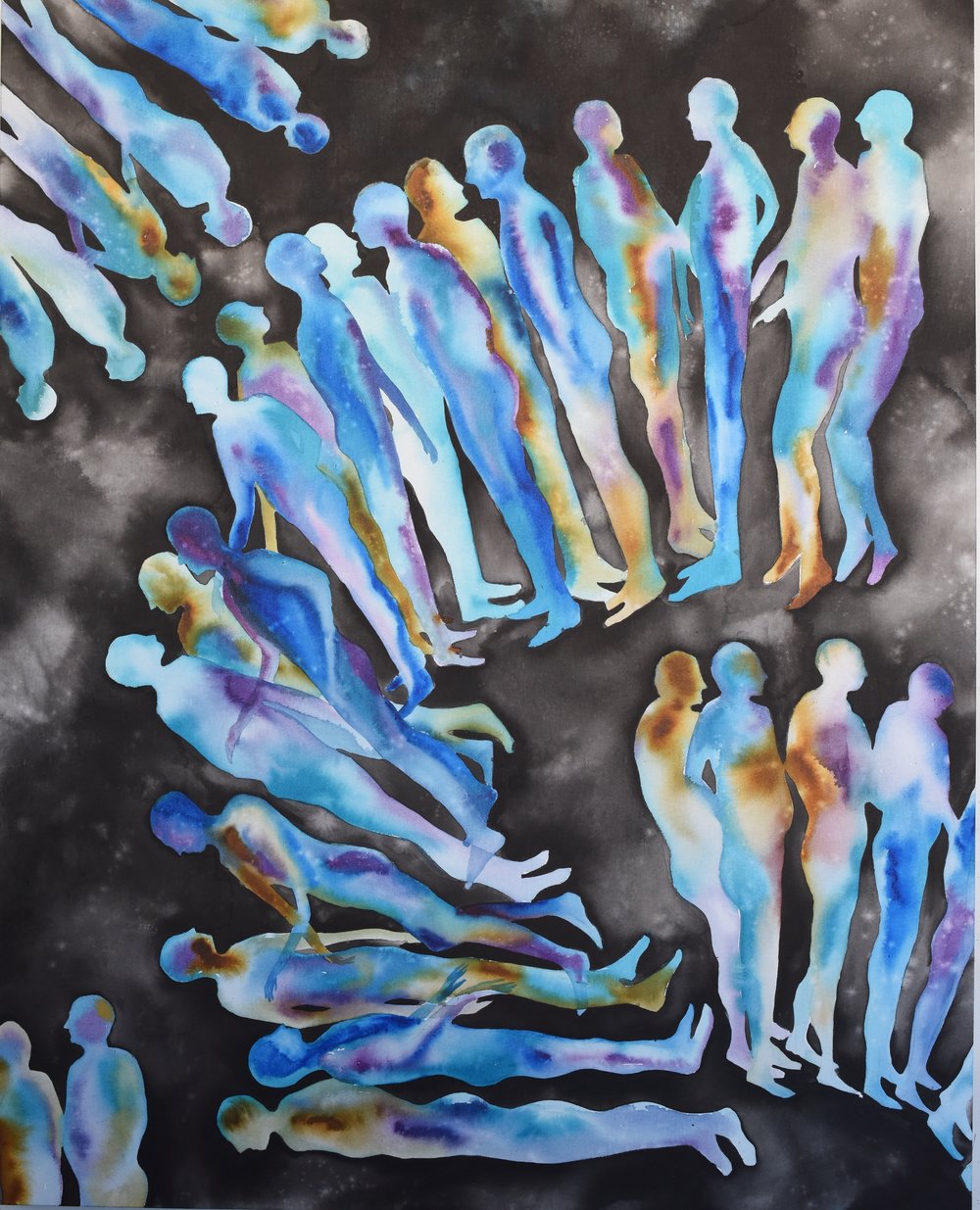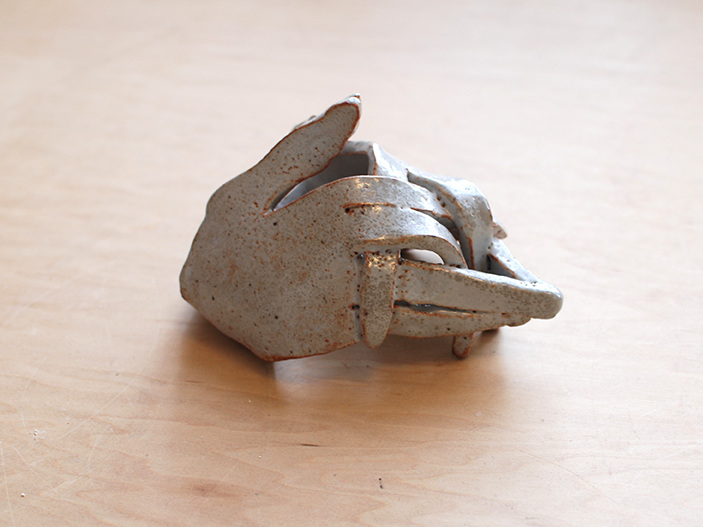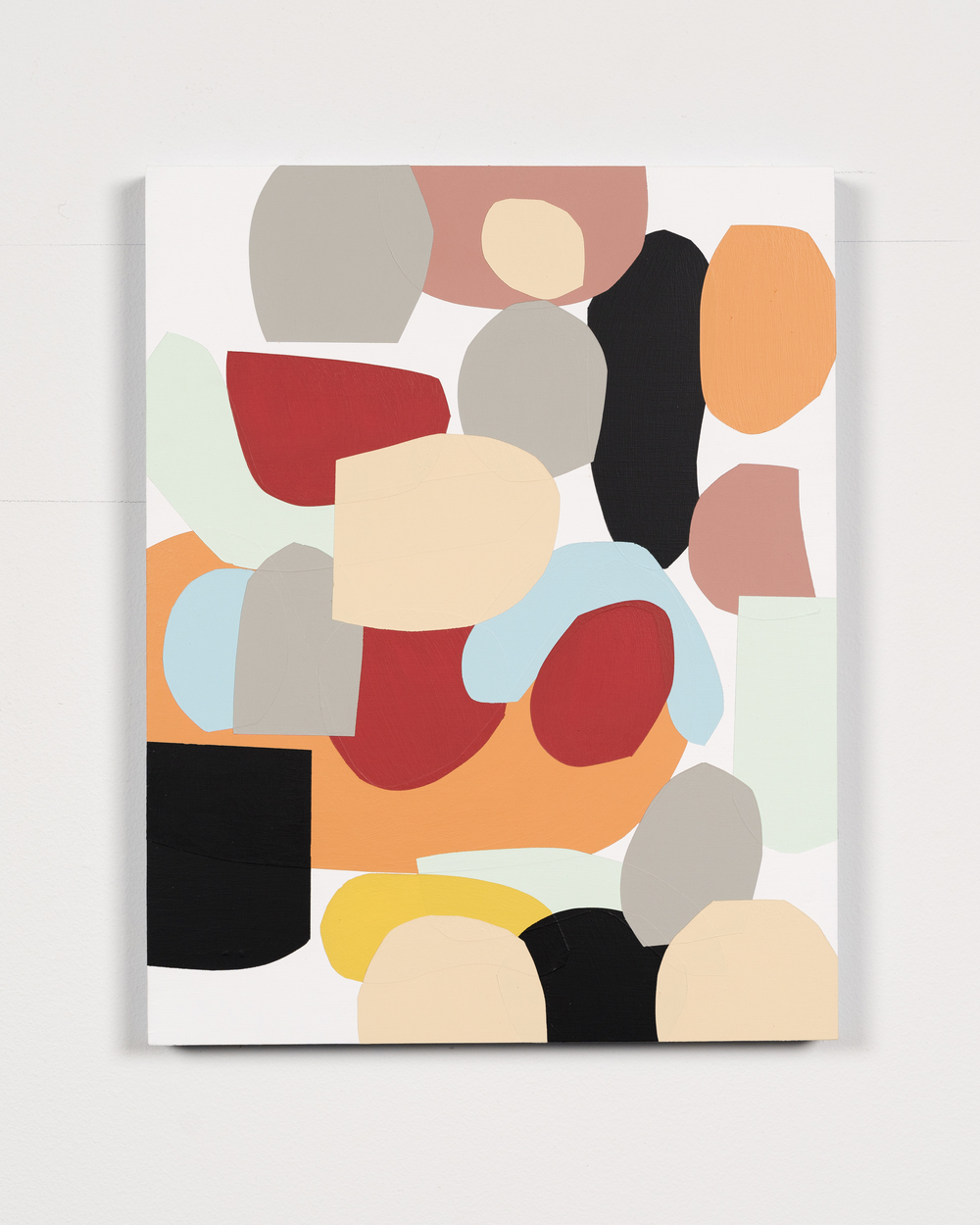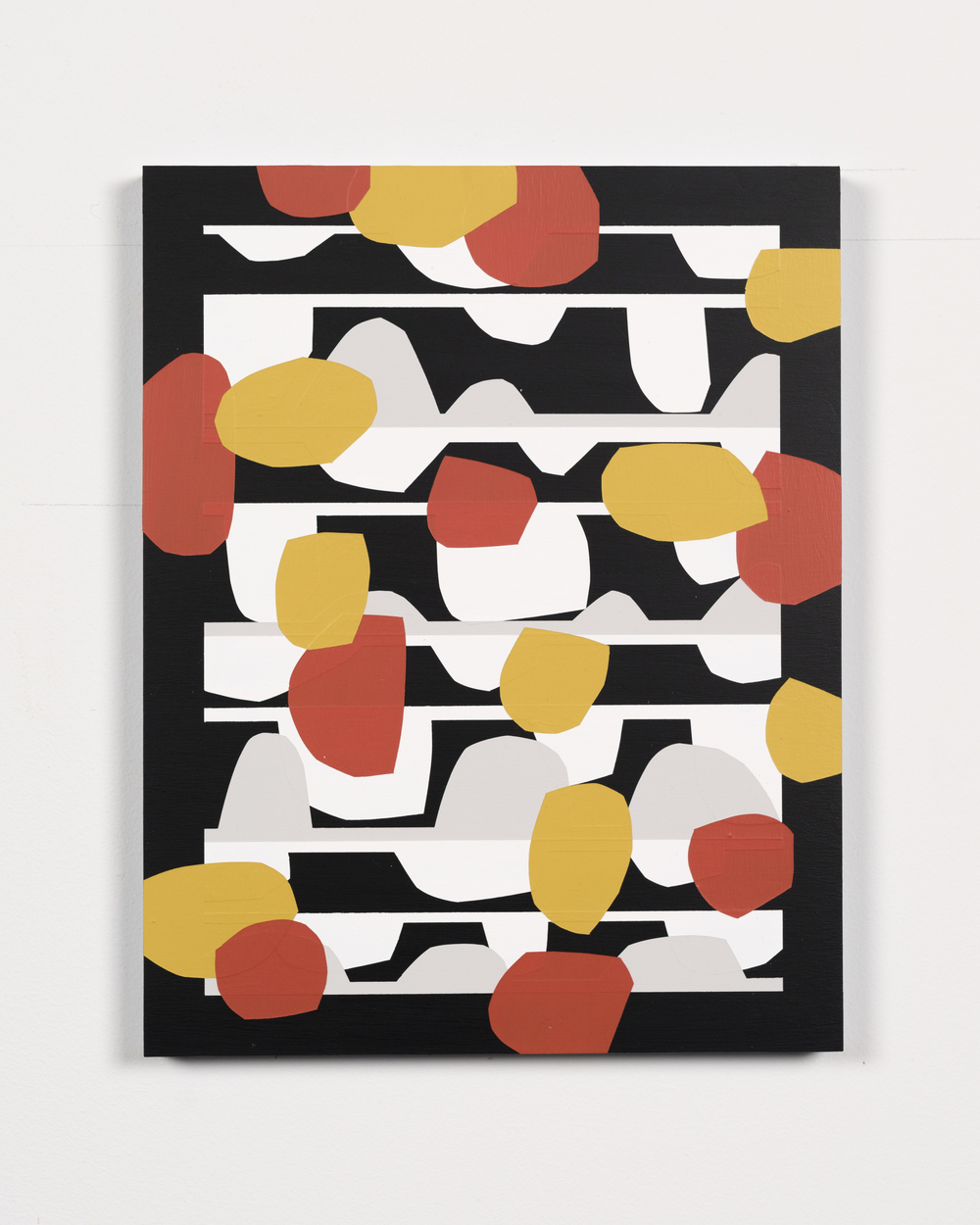Leif Low-Beer lives and works in Berlin and New York. His sculptures featured in "small moments" group exhibition, on view this November 2017 at Brilliant Champions Gallery, are part of a larger, evolving, installation in the artist's Berlin studio. Below we've included the artist's statement on the project as well as images from the studio.
LEIF LOW-BEER
MISSED OPPORTUNITIES
FROM RICHARD CENTRIC BEHAVIOR
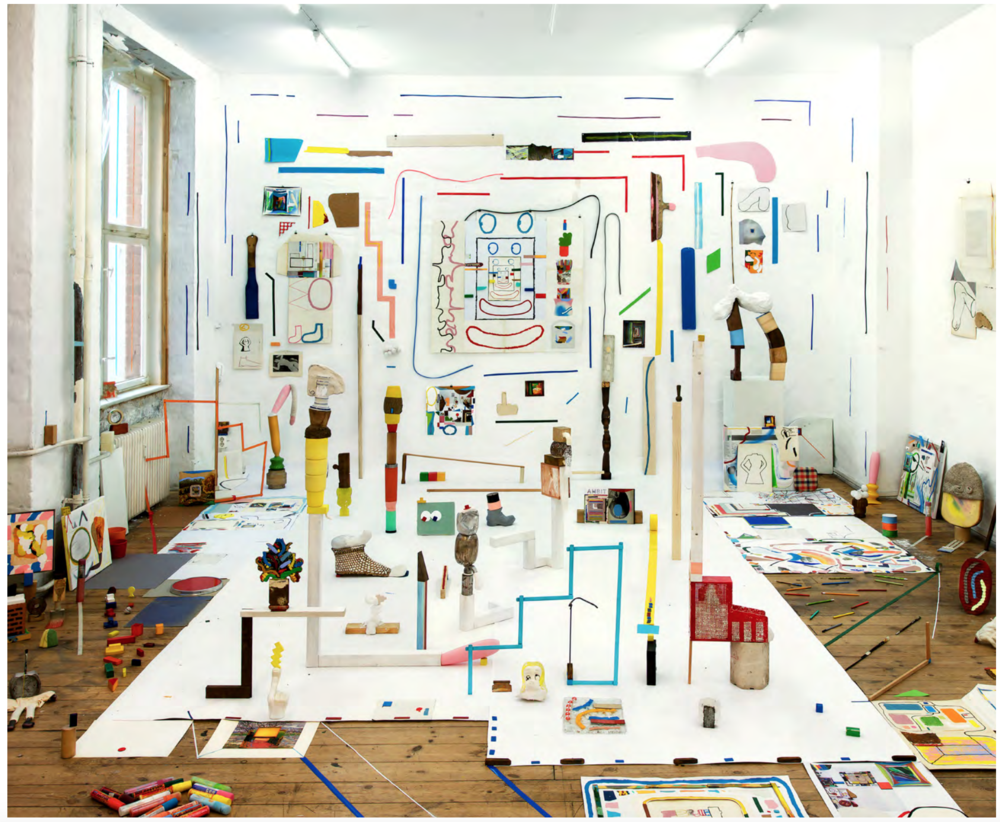
Mixed media installation un-shown work currently assembled in artist studio
Dimensions: 17’ x 26’ x10’
Berlin, 2017
‘Missed opportunities from Richard centric behavior (so and so’s penis was so sacred to him that it led him astray from the Lord).’
In the studio, my choices are governed by a feeling for narrative. I move until stories are revealed and then make decisions informed by those stories. Colors pinch one another, a group of sculptures sit together until they become lazy or lusty or envious. The subtle movement from conversation to conversation, from personality to personality, is discovered in the transition between shapes and forms.
My work bears the marks of this narrative process, but the story remains open-ended and ambiguous, shifting through multiple frames and tellings. I’m interested in the idea that an installation, sculpture, or drawing can be a form of description – a way of telling stories that are familiar to us, but that cannot be expressed in words. My work explores the mute in-between of things: between known and unknown, sayable and unsayable, flat and dimensional. The independence of a small composition pulls against the order imposed by a larger environment – not entirely of it, but not fully apart from it either.
I’ve been working with installation for a number of years. I first drew objects in space – then later used objects in space to create drawings. In a series of pieces, I laid out objects that, when viewed at a specific angle, resolved into a single coherent image. When seen from a given viewpoint, these compositions acquired the flatness of a picture, creating a relationship between drawing and sculpture. Part of the tension in these compositions lay in the conflict between the individual and the group: Can smaller works that are themselves understood to be individually complete come together to form a single piece – a larger installation that is itself also read as a fully unified whole? It is an interesting challenge to encourage this sort of doubled-attention from the viewer.
Over time, I’ve extended these ideas into larger pieces with more expansive frames, pushing at the edge of this problem. In this work I installed a series of sculptures and drawings in the studio space. While strict spatial relationships remained important, the work became looser, and more intricate narrative relationships began to develop.
A work like this often begins with a single object and moves outwards. The product and discards of my environment become incorporated into the work. Removed from their purpose and context, these objects are marks and begin to structure the kinds of stories that can be told. The sense of a given place comes to underwrite the work as a whole – from the selection (and availability) of materials, to the feeling for story itself.
Throughout the process, I try to keep my movements spontaneous, maintaining a sense of openness and improvisation while staying within a larger set of rules and structures. A finished drawing sits first at the base of one assemblage, then becomes the backdrop for a different piece. A found-object offers me a new shape to work with, and becomes part of the life of the studio. Pieces meet and marry, living happily together — unless they realize it is not for the best, and grow apart.
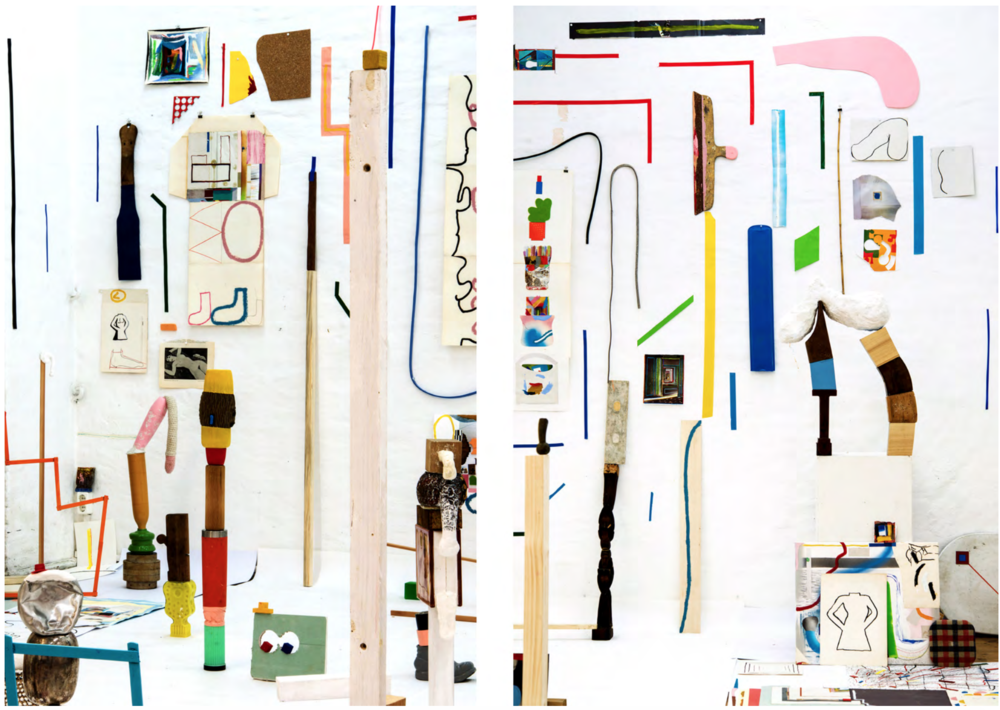



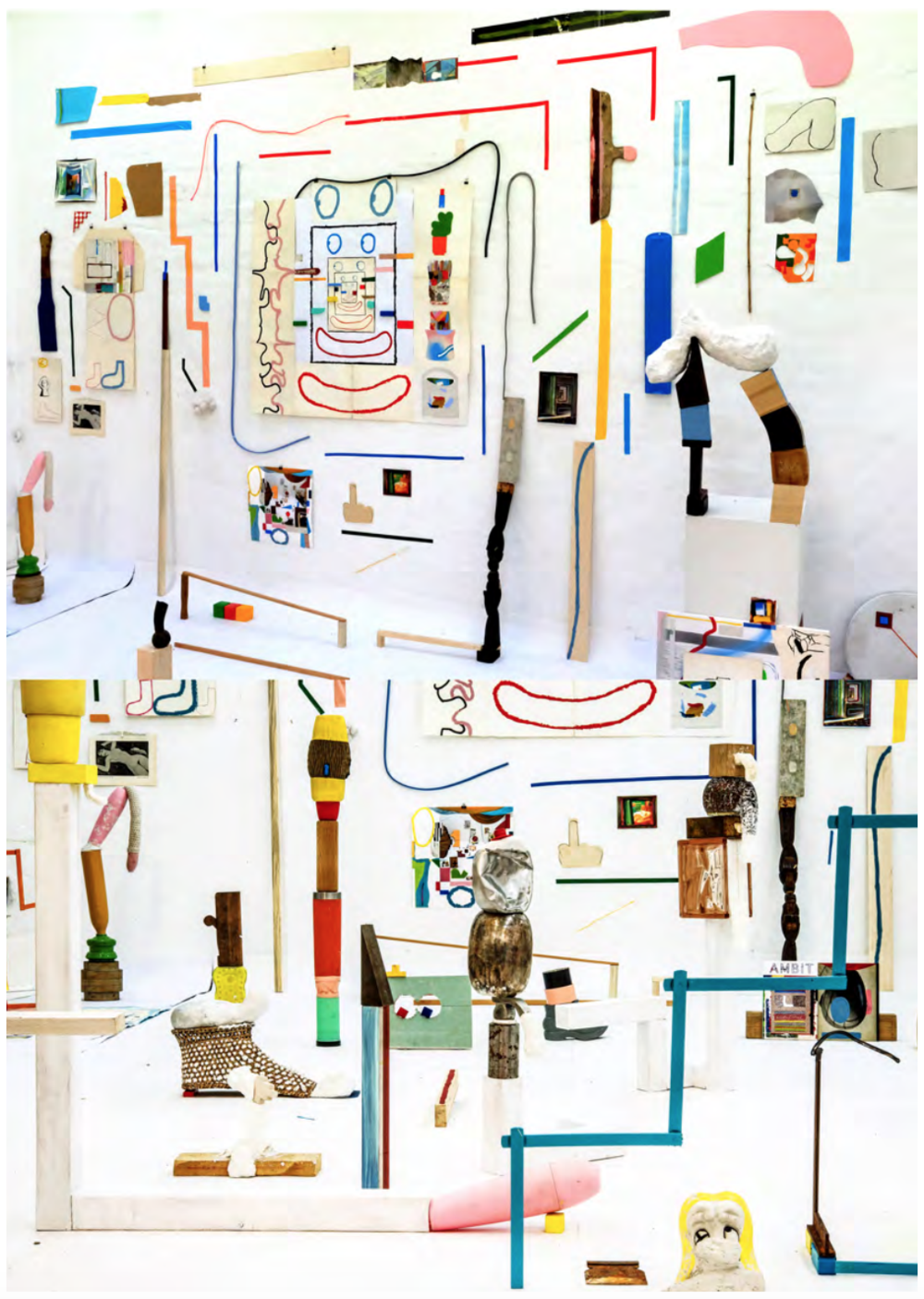

Photo credits: Dimitri Kireev/ Leif Low-Beer, Berlin 2017





